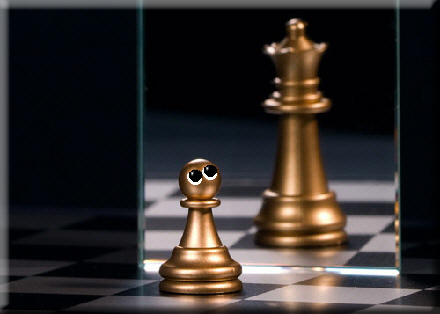|

“Every
Pawn is a potential Queen”
For 500 years Chess was played in Europe with the rules inherited from the Muslims. But it took so long to play a whole game that most players confined themselves to solving Chess ditties, i.e., special positions contrived by problem composers in which a hidden winning maneuver has to be discerned.
During the latter part of the middle ages, leading Spanish and Italian players proposed sweeping changes in the rules which shortened the game considerably.
These changes increased the power of the Queen and the Bishops and introduced a simultaneous move of King and Rook 1 / Rook 2 with the objective of getting Rook 1 or Rook 2 more quickly into active play.

By the end of the 15th century the new rules had been accepted in all European countries and gradually the oriental countries followed suit. As players everywhere preferred the shorter game, it transpired that within a hundred years it was again played with the same rules but on a near global basis.
The game framework has remained fixed since this period.
It is a square board on which horizontal and vertical lines mark off
eight rows of eight cells each. It is always placed so
that the players have a light colored cell at their lower right. The squares on traditional boards are always referred to as black and white, the same as the Chessmen, regardless of their actual
color.
The players themselves are also called white and black. Many Jewish and Christian scholars have played Chess. Opposition to the game in the past has abated as it has distinguished itself from gambling and time wasting games. Chess is played in many eastern countries which shows that the game has global appeal.
The early Christian church condemned the game which shows the full force of the intolerant medieval mode of thinking prevalent during that period of florescence.
By the year 1,400 prohibition ceased as the church, following the nobility, embraced a more enlightened view of the game and those engaged in its practice.
Many new insights have been gleaned on Level 1. For some it has become boring due to the limited size of the board and number of pieces and for most the thrill has gone.
|